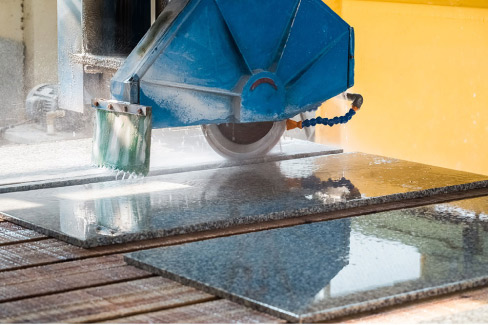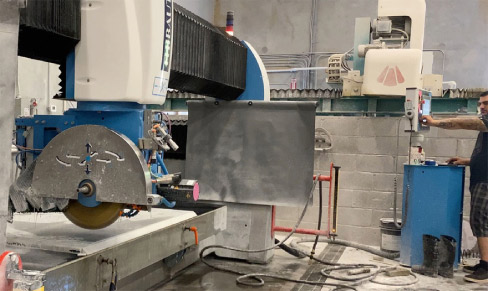How to Love a Bottleneck
Ed Young
Fabricator’s Business Coach
 |
|
Constantly moving bottlenecks are creating a lot of the chaos occurring today in fabrication plants. |
 |
|
Alter work schedules and break times to ensure the Constraint is always running. |
Production managers attack bottlenecks. Since a bottleneck in the flow of a fabrication process limits the output of that process, breaking bottlenecks is usually seen as an effective way to increase output.
Effectively breaking a bottleneck requires focusing on that process step.
- Equipment may be moved.
- People are re-allocated.
- Work rules are changed.
A lot of attention is paid to how the rest of the plant impacts operation of the bottleneck.
The problem is, once the bottleneck is broken, another one shows up elsewhere in the plant. Then the focus shifts to address the new bottleneck. Frequently, this shift in focus causes improvements at the first bottleneck to backslide. Sometimes the bottleneck shifts back to the first location – while everyone is still trying to improve the second bottleneck. Imagine the chaos that occurs while you are attacking the third and fourth bottlenecks! Additionally, while all this is going on, product mix shifts, you have turnover, you have absenteeism, the saw breaks down — and the bottleneck moves somewhere totally different. This makes it impossible to focus on any one thing, so we end up tackling everything.
These constantly moving bottlenecks are creating a lot of the chaos occurring today in fabrication plants.
As a manager, your job is to continuously improve the performance of your fab plant. If attacking bottlenecks is an effective way to increase output of the plant, and if doing this is causing chaos in your operation while hampering your improvement efforts, how do you improve operational performance without all the chaos? There’s an old sales adage: “If you can’t fix it, feature it.” The scratch-and-dent sale comes to mind.
The idea is to find a way to make bottlenecks work for you.
The core of this approach is to find the ‘ultimate bottleneck’ in your process – let’s call it a “Constraint”. Common characteristics of a Constraint are:
- Represents your competitive edge
- May be difficult and/or expensive to increase capacity
- May or may not be a current bottleneck
- Preferably is very close to your customer
The constraint becomes the point around which you will leverage your business to drive a tremendous increase in profit.
Remember the focusing activities we described above when talking about eliminating bottlenecks? Once you select your constraint, similar activities will occur, but with even more intensity, and with an even greater positive impact on the rest of the plant. For that reason, identifying the constraint should be a strategic decision. It is an intentional selection, not an abstract analysis.
Since this strategic decision will have such a fundamental impact on your business, the constraint should never move. Once you have selected your constraint, you will begin to optimize how the rest of the plant supports that process step. Here are a few suggestions:
- Don’t waste constraint time processing an order that is due several days or weeks from now, since products sitting around the shop can get damaged.
- Make sure all details for an order have been finalized before it is released to the shop – sink selection, edge detail, layout.
- Don’t waste constraint time processing parts that already have defects. You will then have to invest precious constraint time to remake that part.
- Don’t waste constraint time with Non-Value-Added activities. Fully utilize the capacity of the Constraint operation to do only Value-Added work (see the article from Slippery Rock Gazette November 2020).
- Alter work schedules and break times to ensure the Constraint is always running. Remember, if the Constraint stops, then that is the same as your entire plant stopping.
If your constraint is not currently also your bottleneck, then use your bottleneck-busting skills to drive the bottleneck to the constraint process step – and keep it there. Focusing on reducing or eliminating Non-Value-Added activities is an effective and low-cost way to do that. We discussed some useful tools in November’s article that will help you do that. You can get those tools for free at www.FabricatorsCoach.com.
A common focus on the constraint by everyone in the plant drives effective prioritization for all operational and improvement activities. The impact on the Constraint is always Job One. Everything else is secondary. If you do this well, you can see the throughput of your plant increase 30 percent or more – and with little to no investment in capital or additional labor. Obviously, this greatly increases profit. This enhanced focus on the Constraint will also greatly reduce the level of chaos in your plant.
To pull this off, you will need a few additional tools and some key financial measures. So that you have what you need, each month for six months, I will cover additional tools and recommendations. This is the first those articles. Next month we will talk about how to leverage the number of jobs in your shop to improve your due date performance. Here is an excerpt:
The fewer jobs in your shop (inventory), the shorter your lead time.
A lot of jobs in your shop means your lead times may be longer than you like. Lean is a popular process improvement tool and it pushes for the lowest inventory possible to generate the shortest lead times possible – and, therefore, great competitive advantage. So, if we want short lead times then this must be the best business solution, right?
To find out more about How to Love a Bottleneck as well as How to Reduce the Chaos, Make More Money, and Get Your Life Back – email me at Ed@FabricatorsCoach.com to set up a call.
In addition to having run a countertop fabrication shop, Ed has also helped many fab shop owners become very successful. He is a seasoned manufacturing manager and coach who has helped hundreds of companies from single person startups to large international corporations. As a former business owner, he understands the responsibility to make payroll while also satisfying customers. Ed can be reached at Ed@FabricatorsCoach.com .